What are the differences in specs and performance between A17 Pro with iPhone 15 Pro and A16 Bionic with iPhone 15?

In the iPhone 15 series released in September 2023, the iPhone 15 and iPhone 15 Plus use the same
A17 Pro vs A16 - 9to5Mac
https://9to5mac.com/2024/02/19/a17-pro-vs-a16-bionic-comparison/

According to Apple, the A17 Pro installed in the iPhone 15 Pro and iPhone 15 Pro Max is 'the industry's first 3nm (nanometer) chip.' The number of transistors in the A16 Bionic was 16 billion, while the A17 Pro has increased to 19 billion.
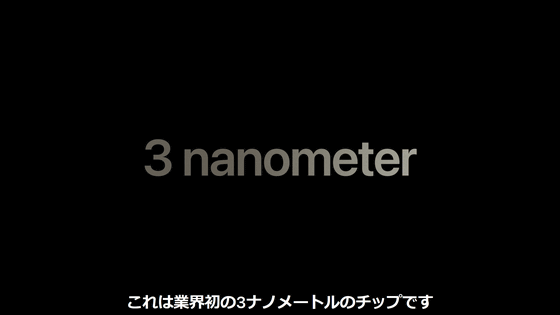
◆CPU
The A17 Pro has the same number of CPU cores as the A16 Bionic (6 cores), but due to the evolution of process rules and design improvements, it has evolved into a faster and higher-performance CPU.
Comparing the CPU benchmarks of A17 Pro, A16 Bionic, and A15 Bionic on the benchmark platform
| A17 Pro | A16 Bionic | A15 Bionic | |
|---|---|---|---|
| single core score | 2914 | 2519 | 2183 |
| multi-core score | 7199 | 6367 | 5144 |
The above results are almost the same as the results when benchmark tests were performed on the iPhone 15 Pro Max and iPhone 14 Pro Max obtained from GIGAZINE.
iPhone 15 Pro Max photo & benchmark review, A17 Pro chip adopted & finally what is the potential of the top iPhone model equipped with USB-C? -GIGAZINE

Apple doesn't provide details about the CPU's power efficiency, but Apple says the A17 Pro is the 'most efficient mobile CPU,' and the A17 Pro's high-efficiency cores deliver three times the performance per watt than competing products. I am appealing that it is excellent.
◆GPU
The number of GPU cores has increased to 6 cores in the A17 Pro, while the A16 Bionic has 5 cores. Apple mentions the A17 Pro's GPU as ``up to 20% faster peak graphics performance than the A16 Bionic.'' With features such as mesh shading, it seems to work more efficiently even during long game play.
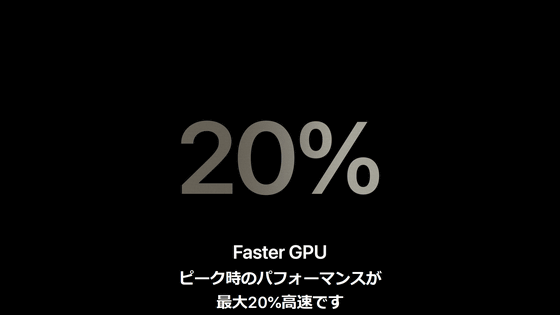
One of the major changes regarding the A17 Pro's GPU is support for hardware-accelerated ray tracing. Apple claims that the A17 Pro will be able to deliver smoother graphics at higher frame rates, and can perform ray tracing four times faster than software-based ray tracing on the A16 Bionic.
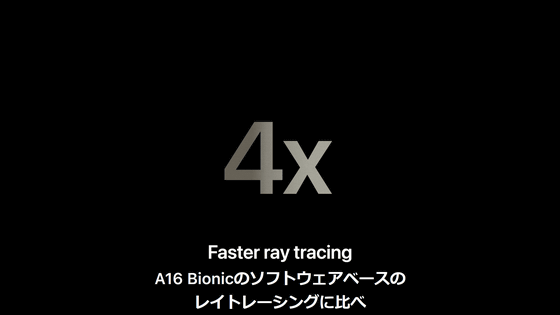
Apple is promoting that game makers such as Capcom will release high-end game apps that utilize the A17 Pro's GPU, and iOS app versions of ``
In addition, in the GPU benchmark using GeekBench 6, the score of iPhone 15 Pro Max (A17 Pro: left) is '27275', the score of iPhone 14 Pro Max (A16 Bionic: right) is '22870', and the score is about 19. The result was a % increase.
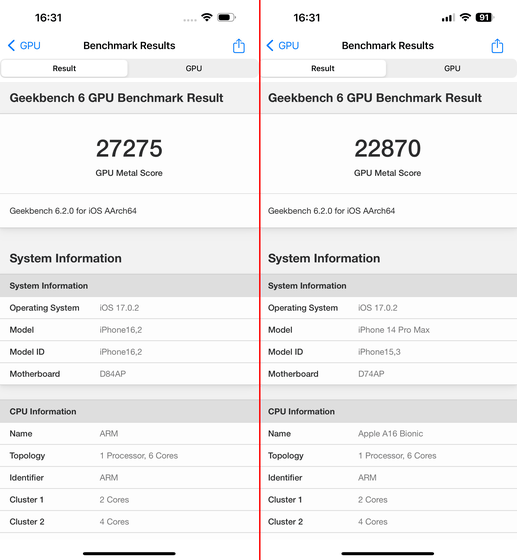
◆Neural Engine
Both Neural Engines, which specialize in machine learning-related processing, have ``16 cores,'' but the number of operations that can be processed per second has increased from 17 trillion to 35 trillion, which means the processing speed has approximately doubled. This means that you are doing so.
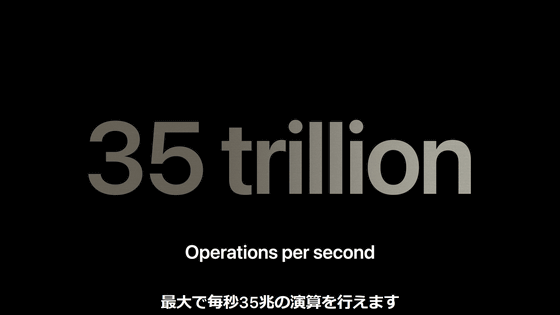
◆Memory
The memory (RAM) of the A16 Bionic was '6GB', while the A17 Pro has evolved to '8GB'. With the increased memory, launching and switching apps should be faster and smoother than before. Many Android devices have 8GB or more of memory, but because Apple develops the iPhone's hardware and software together, it can achieve better performance with less memory than Android. 9to5Mac pointed out.
◆USB 3
Another big feature of the A17 Pro is that it is equipped with a new USB controller to support USB 3 transfer speeds of up to 10Gbps. In other words, the iPhone 15 Pro and iPhone 15 Pro Max can use the USB-C port for high-speed data transfer at up to 10Gbps, but the iPhone 15 and iPhone 15 Plus with A16 Bionic can use the USB-C port. Even if you use , you can only transfer data at 480Mbps. This is equivalent to the maximum data transfer speed when transferring data using the Lightning port on iPhone 14 or earlier.
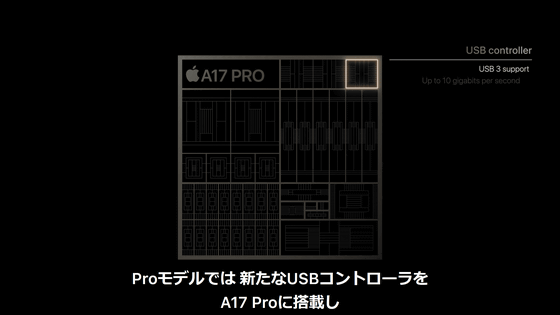
However, the iPad mini equipped with A15 Bionic can transfer data at up to 5Gbps by using the USB-C port, which is much faster than the iPhone 15 equipped with A16 Bionic.
We have also published an article in which we actually experienced the extremely fast data transfer using the iPhone 15 Pro Max's USB-C port.
Finally, how much faster is the data transfer of the iPhone 15 Pro Max equipped with a USB-C connector compared to Lightning? I also compared the included cable and high-speed transfer compatible cable - GIGAZINE

◆Media engine
A17 Pro adds an AV1 decoder to the ProRes codec and display engine. Apple claims that this will improve the video streaming experience on the iPhone 15 Pro.
Commenting on the above comparison, 9to5Mac says, ``At first glance, the improvements in the A17 Pro over the A16 Bionic may not seem that great.However, the combination of multiple improvements improves graphics and Neural Engine performance. 'Whether most users need the world's most powerful smartphone chip is another matter. It's clear that the A17 Pro is the best choice for those looking for something new.'
Related Posts:






